A Portable Layout in S-Scale
More of the N-Scale Zilwaukee Okeechobee and Tremungus
UNDER CONSTRUCTION
This page is the second of 2 pages of photos and description. Please click here to visit the previous page
| Home |
Airport
This little airport was made using drywall compound for the runways, some commercial building kits, a DC-3 kit in 1:150 (close enough) and a Ford Trimotor. The small vehicles were made from metal kits. The numbers on the runway match the fictional location and orientation.

| Home |
Anhinga Copper
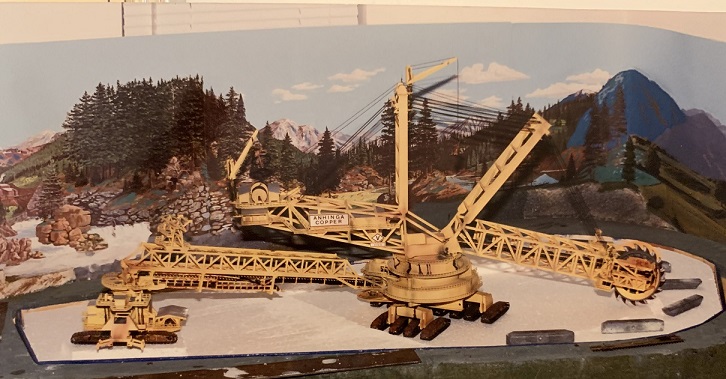 This strip mining machine is a kit made by Revell in Germany. Although the scale was not an exact match for N, based on the printing on the box, it was pretty close. When I placed commercial N-Scale people on it, they seemed to be the right size. |
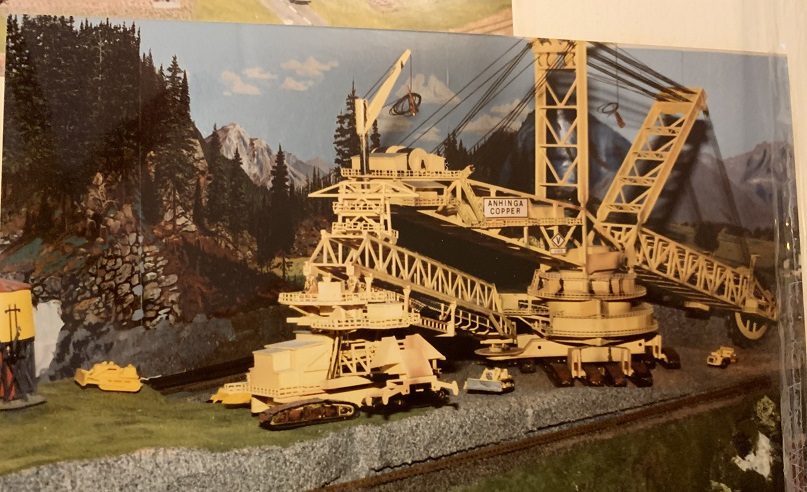 One curious thing, I discovered after I had built it, was that these kits were used as miniature props in the Arnold Schwarzenegger movie "Total Recall" on Mars |
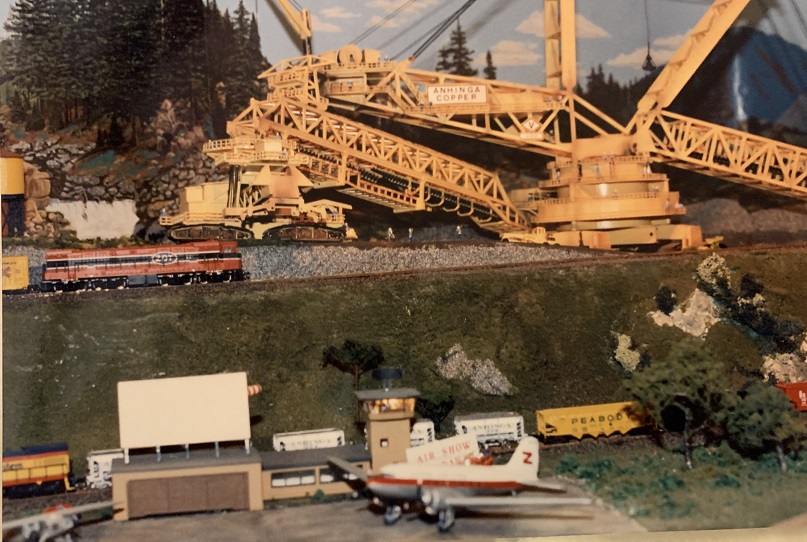 This image shows the mining machine in the layout. It was on an elevated area just above the airport. Tracks passed around the lift out section holding the machine and made a reverse loop to travel back down the mountain. |
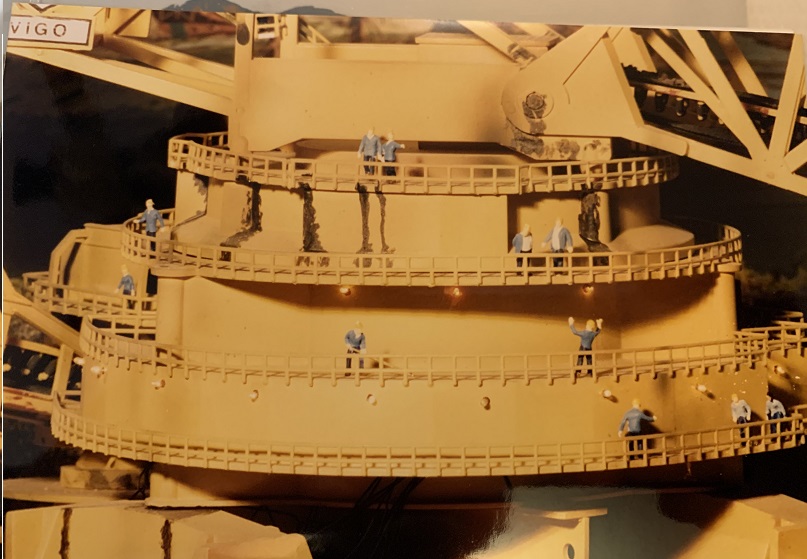 Here you can see some of the little people as they work. There were a ton of little light bulbs. None of them was easily replaced if they burned out. If I ever do something similar, I will take that into account. When we moved and tore the layout down, I donated the machine to an N-Scale club in South Miami. I understand that they still have it. |
Okeechobee
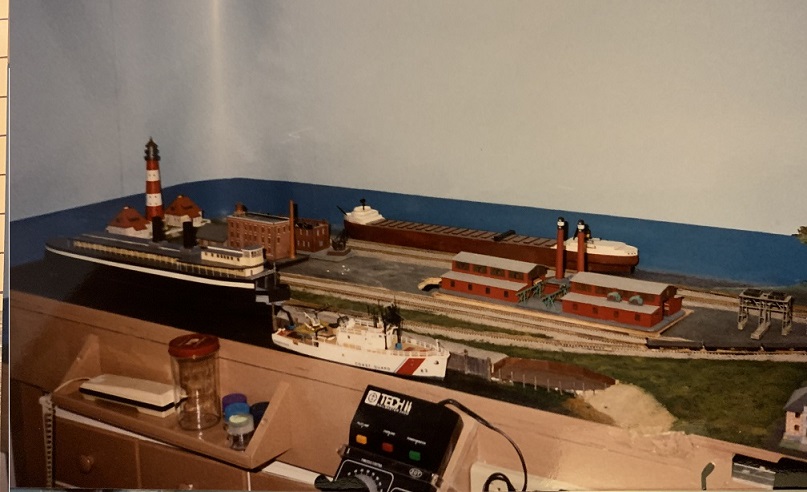 One end of the layout was home to the town of Okeechobee. This Okeechobee was located somewhere on a Great Lake. It provided ferry service to a corresponding port in Canada. That provided through freight and passenger service connecting to all of the States and Provinces. Here, you can see a slightly undersized model of the Edmund Fitzgerald and a correctly scaled model of the car ferry Chief Wawatam. The Chief worked the waters at the Straits of Mackinaw. So, it is not much of a stretch to think it might have travelled to a Canadian port on Lake Huron. I obtained hull plans for the Chief from the original builders in Cleveland. Both models are built from scratch. The white USCG cutter was adapted from a model of Cousteau's Calypso. The original vessel was a converted, wooden hulled minesweeper. Seems fitting to have it back on the Great Lakes. It started life as a plastic kit. The matching little factories were commercial kits. I fabricated a travelling train that shuttled between the two buildings to handle materials. It was powered by a jackscrew made with about a foot of threaded rod. Simple electronic limit switches automatically reversed polarity when the handler reached the ends of the narrow track inside the factories. |
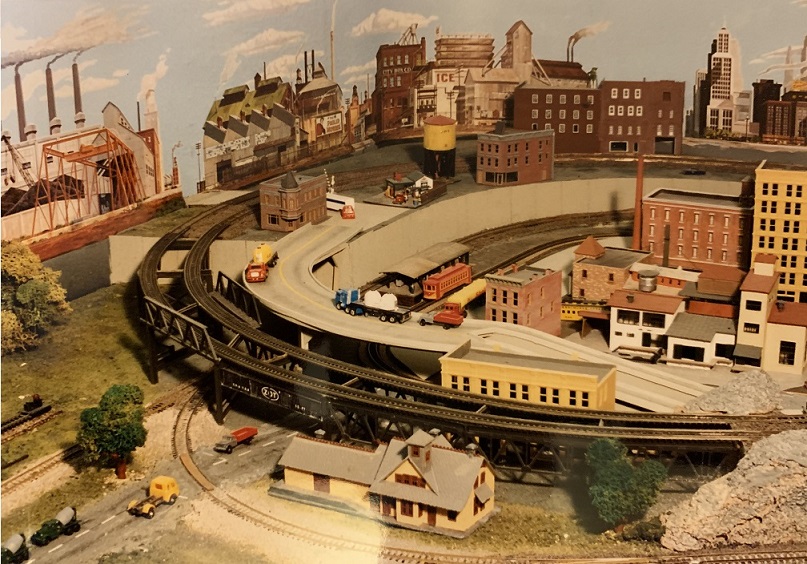 Adjacent to the pier area is the town of Okeechobee. You can see the N-Scale bachmann trolley shell on the lower level. It sat on top of a Micro-Trains, Z-Scale F-Unit that ran on a loop of track. The downtown area was served by that loop of narrow gauge trolley track. The double-track mainline passes above the downtown area and partly on some girders and trusses. The backdrops are commercial paper stuck onto foamboard and cardstock (for the corner) |
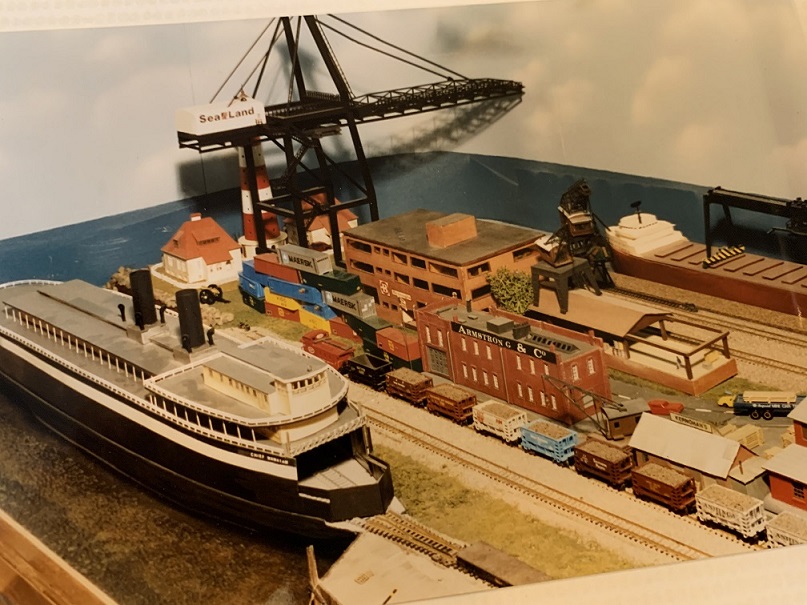 At this end of the pier, we can see that more buildings have been added including an anachronous container crane. I built it from scratch after a visit to Port Everglades near Fort Lauderdale, Florida. It was to be used on an N-Trak module. Sadly, my round robin club (Tuesday Night Turntable) fell apart before we had built all of the planned modules. It lived on here until 1996 when we moved to Palm Beach County. |
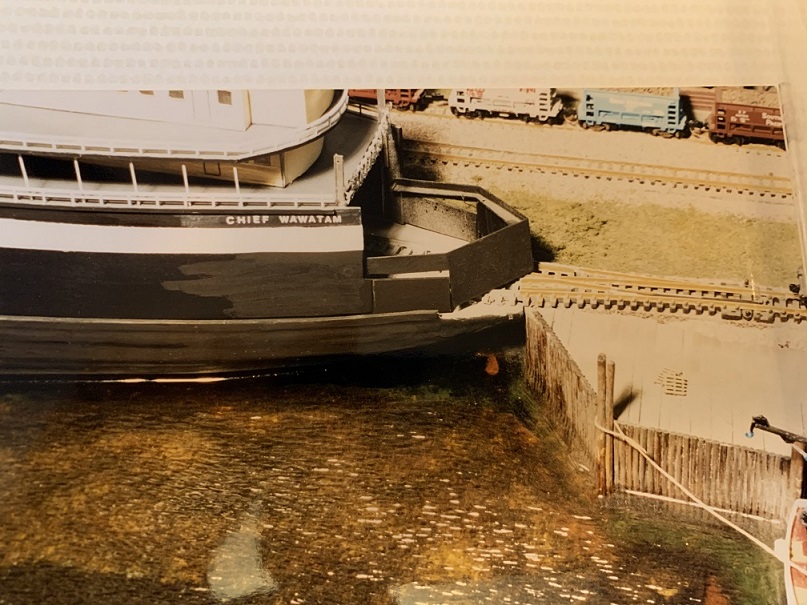 The Chief Wawatam worked as a car ferry and ice breaker in the Straits of Mackinaw. Even after the huge suspension bridge was built for automobile traffic, there was still a need for rail service between the peninsulas of Michigan and The Chief did that job. She had three screws for propulsion. One was in the bow and was used to draw water out from under ice. Then, the ship rode up over the, now unsupported, ice shelf and broke it up. The aft end of the ship was sealed as a means to weather storms by turning away from the wind and waves. Interestingly, The Chief was launched in the same year the Titanic sank. The water is modeled using epoxy resin. Once it cured, I used a rotary tool to carve waves in the surface. Then, I applied high gloss varnish to restore transparancy. I still have the superstructure. The hull was embedded in epoxy and did not survive demolition of the layout. |
Tremungus
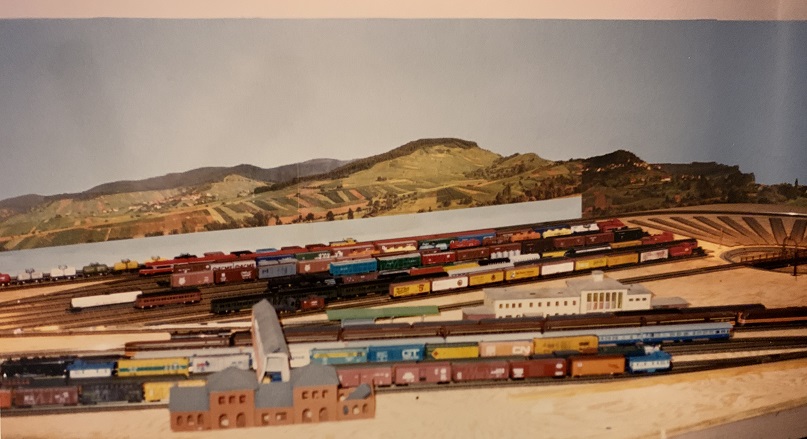 The town of Tremungus existed mostly as a classification yard, a passenger station and an engine facility. Most of the track throughout the ZOT was atlas flex track, Peco turnouts in most places and Shinohara in the yard. All of them were controlled with Tortoise switch machines. In the yard, the extra contacts on the switch machines were used to route power to the indicated tracks. Some of the passenger station buildings were new kits bashed to fit, old kits salvaged from local auctions and scratch-built parts. This view is from early in the process. |
|
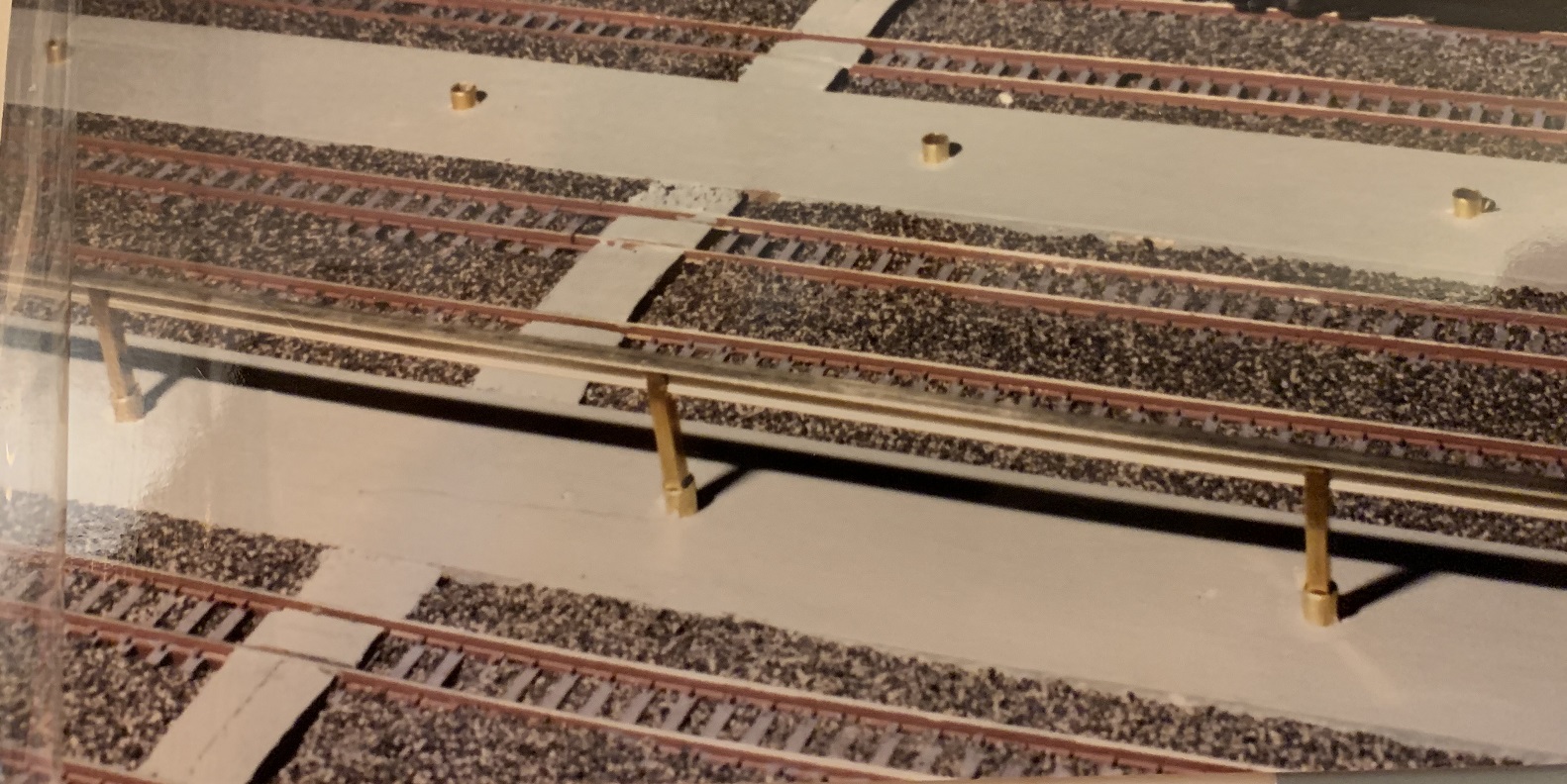 There were two platform covers. The upper photo shows the brass bases installed. The bottom one shows the heavy rail used as the main roof support fitted into the bases. Those brass to brass connections provided one of the electrical connections to the lights. |
|
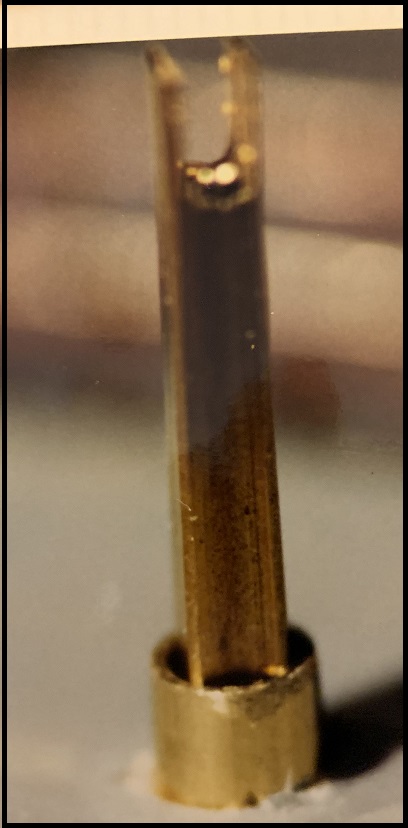 Details of the mounting posts |
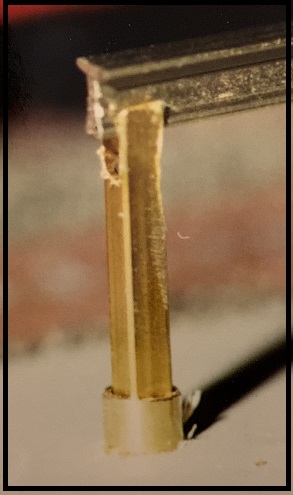 Details |
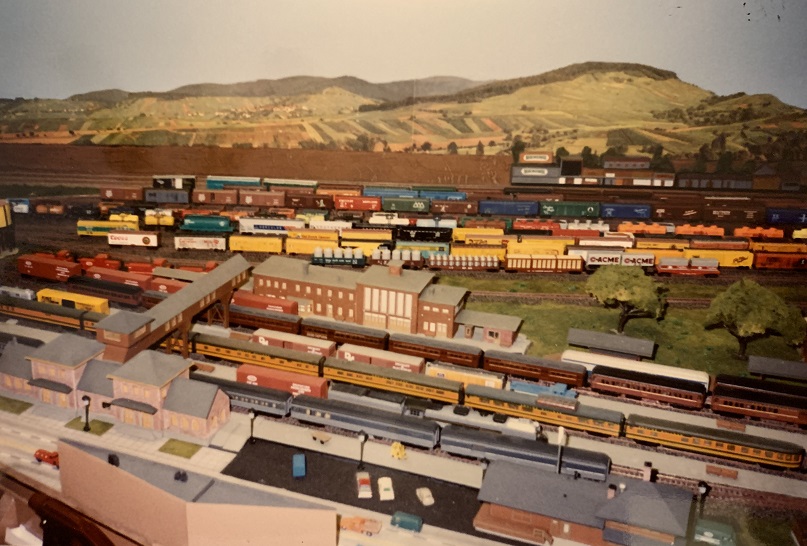 Later on, there were more buildings. That larger structure on the far side of the passenger terminal was salvaged from a previous owner. It had been poorly assembled with globs of glue all over the place and unpainted. A little cleanup and some paint transformed it from an eyesore to the only known Harvey House east of Chicago. The double-ended station tracks allowed for longer trains to arrive, serve passenger loading and unloading and then depart with a minimum of fuss. One of the strengths of N-Scale is that it can support trains that are similar to real life examples. That Great Northern passenger train had 11 full-lengthpassenger cars pulled by an S-2 4-8-4 Steamer. Another visitor was a 9-car Portland Rose hauled by a Challenger. |
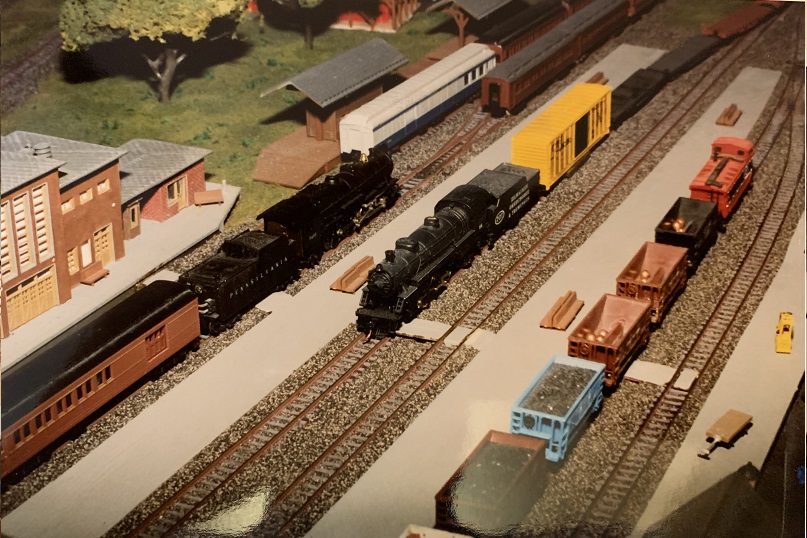 The mighty Pennsylvania also called on Tremungus. That train was headed by a Minitrix K-4s Pacific. As made, it was not reliable. It made very balky contact with the rails. I discovered that one of the internal connections was a metal-to-metal contact that was prone to produce insulating oxidation. Adding a wire to connect in parallel fixed all of that and made it into a very steady puller. |
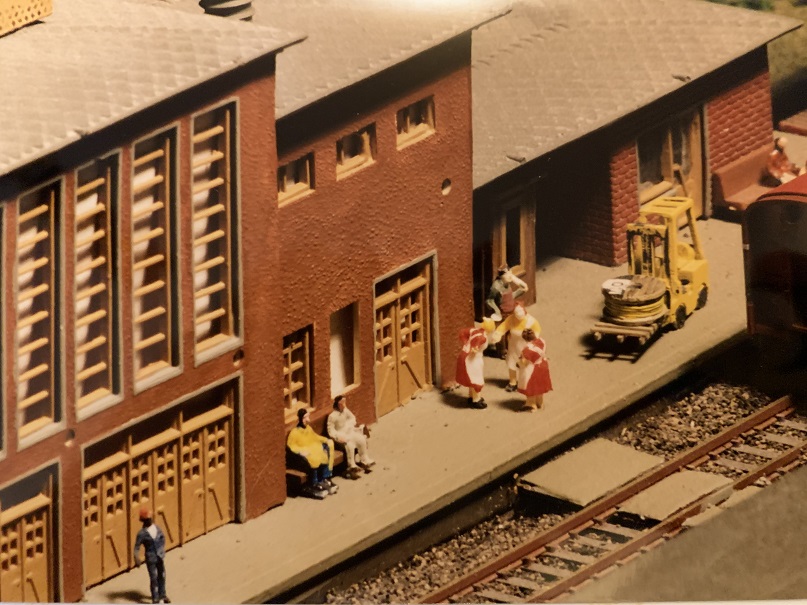 One of the surprisingly pleasant activities is installing little people on the layout. They really bring the whole thing to life. The forklift was a metal kit. The figures came from the many sets of various sorts. Putting them together to make a scene was a serious delight. This image also shows the brown paint on the sides of the rails. All of the track on the old ZOT was code 80 nickel-silver. That meant the rails scaled out to over a foot tall. Adding the rust-colored paint to the sides reduced the apparent height. By the time the scenery, trains and people were in place the rails looked just right to my eyes. |
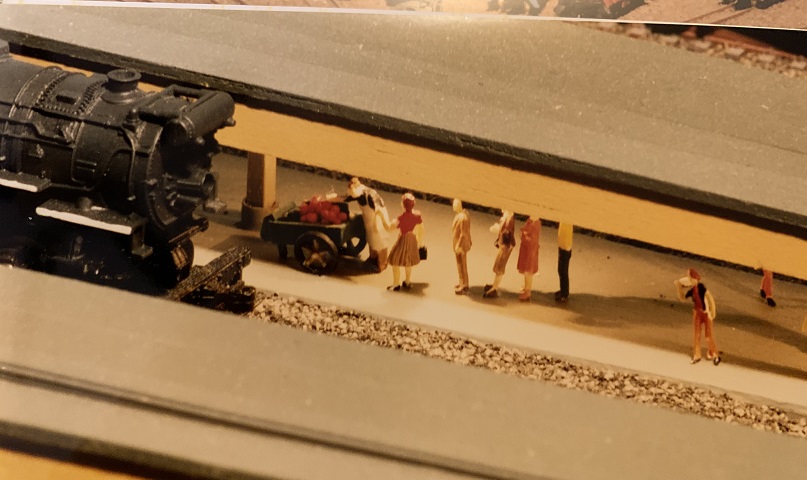 When the passenger platforms were finished, I lighted them with little bulbs stuck up, inside and hidden by fascia boards. Power was supplied by way of square brass posts that also supported the roofs and connected to round brass bases. Wires connected DC voltage to those brass parts. The roofs were removable. Slipping the posts into the bases made a reliable connection. There were over 150 little people on the platforms. They were all glued in place by dipping the tiny feet into white glue and then supporting them while it dried. We really cannot have too many people. |
This page is the second of 2 pages of photos and description. Please click here to visit the previous page
| Home |
| Site and Pages Copyright 2011-2025 - William P. Porter --- Some content belongs to the indicated provider. |